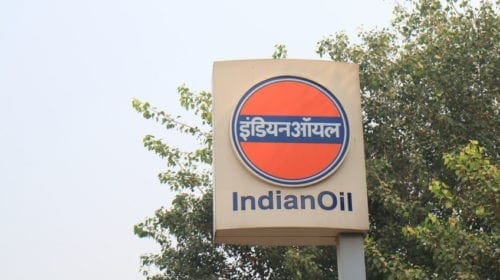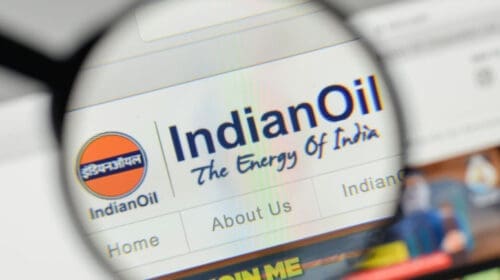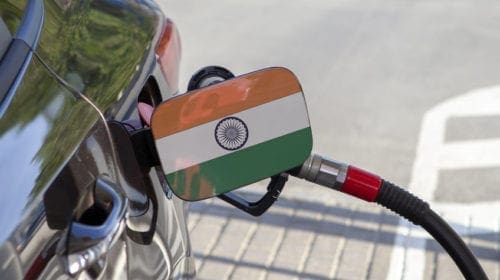India’s state-owned gas company, GAIL (India) Ltd has signed three time-swap deals with global companies to sell some of its previously contracted US liquefied natural gas (LNG) in an attempt to cut costs for home consumers.
While disclosing this in its Annual Report, GAIL said that under the deals, the company will buy LNG from international companies this year and sell equivalent amount of Henry Hub-indexed volumes during 2018-19.
GAIL, which is India’s largest gas processing and distribution company, is also seeking destination swaps to cut shipping costs of American LNG.
GAIL Chairman and Managing Director B C Tripathi told the media after the company’s shareholders meeting in New Delhi, that the company sold a “major chunk” of the US LNG via time swaps, destination swaps and shipping optimization.
Tripathi said that in all 3.5 million tons of LNG has been swapped.
According to Tripathi, under the time-swap deals, the company will buy LNG from international companies this year and sell equivalent amount of Henry Hub-indexed volumes during 2018-19.
He further said that the company has also entered into deals to take deliveries of gas from a nearby location and in exchange give its US volumes to a company closer to the origin to cut shipping costs.
To meet the rising domestic natural gas demand, GAIL has signed as much as 25 sale purchase agreements with global LNG suppliers such as Royal Dutch Shell, BG Group, Total S.A, etc., among others.
GAIL has also ensured LNG supply through long-term agreements. The Indian Company had signed the first long –term contract with RasGas of Qatar for 25 years starting 2004 while the second long-term contract was signed by India for Exxon’s LNG from Gorgon project in Australia in 2009.
After a several year gap ensuring Qatar and Gorgon LNG, GAIL then signed deals for American LNG between 2011 to 2013. The deals for American LNG had been signed to buy 5.8 million tons of LNG per annum for 20 years.
But India’s thirst for gas was still not be satisfied. GAIL also agreed to buy 2.5 million tons per annum from Russia’s Gazprom for 20 years beginning 2018-2020. However, Gazprom wants to increase supplies to 3.5 million tons per annum and the agreement’s duration to 25 years.
Regarding the US liquefied natural gas to India, the Indian company had signed a deal with Cheniere Energy of United States to buy 3.5 million mt per annum of LNG for 20 years for fixed fees of $548 million, and has also booked capacity for another 2.3 million tons per annum (mtpa) at Dominion Energy’s Cove Point liquefaction plant. These supplies are scheduled to start in 2018.
The Cove Point LNG project is owned by Dominion Cove Point LNG, LP with which GAIL signed a terminal service agreement in April 2013 (through its unit, GAIL Global (USA) LNG LLC) for booking 2.3 mtpa liquefaction capacity.
Under the terminal service agreement, the agreement was that GAIL will procure its own natural gas and deliver for liquefaction at the terminal, using its own vessels. The agreement also stipulated that LNG will then be loaded into ships arranged by the Indian gas major, which will pay service charges to Dominion Cove for liquefaction of natural gas.
Earlier reports stated that GAIL agreed to pay Cheniere Energy a price of $3 per million British thermal unit (mmBtu) plus 115 per cent of the final settlement price for the New York Mercantile Exchange Henry Hub natural gas futures contract for the month in which the relevant cargo is scheduled. Under the deal, 15 per cent of the fixed portion of the contract sales price will be subject to annual adjustment for inflation.
When GAIL signed deals for American LNG, the fuel prices kept rising after its (GAIL’s) terminal service agreement of 2013, but after some time suddenly the oil and gas prices crashed and the long-term contracts strategy of the Indian company resulted in expensive LNG.
A supply glut in the gas market and the bleak prospects for suppliers has opened room for renegotiation, especially with fast-growing gas consumers like India. During late 2015 after the spot LNG prices dramatically reduced, India’s Petronet and Qatar’s RasGas reworked their 25-year gas deal. Recently, India also reached some conclusion on price with the Australian suppliers.
GAIL has also been trying to renegotiate the sales and purchase agreement with Cheniere Energy, because spot gas price is currently around $6-7/mmBtu, whereas the long-term contract prices are around $7.5-8.25/mmBtu. Domestic gas is available at $2.48/ mmBtu.
Analysts feel that due to the global LNG oversupply, Asia spot LNG prices may further drop to below $5/mmBtu by 2019 and remain in that range till 2022, so cheaper LNG would encourage more gas demand in the coming years.
During the last few years, with its rising demand for petroleum products and especially natural gas, India has emerged as a demand center for oil and natural gas. Demand for gas in India is expected to be driven by refineries, fertilizer and power plants.
Market experts expect that the demand for natural gas in India is expected to depict a healthy growth trajectory till 2030 from the current levels. Some forecasts suggest gas demand in India to increase at a rapid rate and LNG to meet over half of India’s gas demand by 2030.
Demand of natural gas may rise even more as the federal government is planning to increase the share of natural gas in India’s energy mix to 15 % ,which will require investments of at least $10 billion for augmenting gas import and pipelines infrastructure.
As the domestic gas production is not keeping pace with the demand, India depends on LNG imports to meet its requirement. Currently, India is the world’s fourth-biggest importer of LNG, behind Japan, South Korea and China, but trends suggest that demand for imported LNG would surge threefold in the coming years.
In terms of figures, India’s energy demand increased by 3.7% year-over-year in 2016. However, during the same period imports increased by 5.7%, led by LNG. Net LNG imports reached 19.2 million mt in 2016. Figures suggest that India has imported 43% of its natural gas needs so far in 2017-18 as local output stagnated. In the meantime, India plans to more than double its LNG imports to 50 million mt by 2020.
Global trends suggest that at present, the share of gas in energy demand is around 28 percent in the United States and around 25 percent in Europe, but India and China are using relatively small part of gas for their energy use – some 5 to 6 percent each. But looking to 2025, for example, China and India account for 53 percent of the increase in global energy demand.
Presently, India has four LNG terminals at Dahej and Hazira in Gujarat State, Dabhol in Maharashtra State and Kochi in the state of Kerala. Besides, India also expects to build three more LNG terminals on its eastern coast.
India born Tara Malhotra is a senior freelance energy writer with experience of more than two decades. He has worked for many international Oil, Gas and Energy publications. He holds a bachelor degree in Science and Post Graduate Diploma in Journalism and Mass Communication. He has also worked as a news photographer for many international publications. Currently, he lives and works in Sydney, Australia.
Oil and gas operations are commonly found in remote locations far from company headquarters. Now, it's possible to monitor pump operations, collate and analyze seismic data, and track employees around the world from almost anywhere. Whether employees are in the office or in the field, the internet and related applications enable a greater multidirectional flow of information – and control – than ever before.












